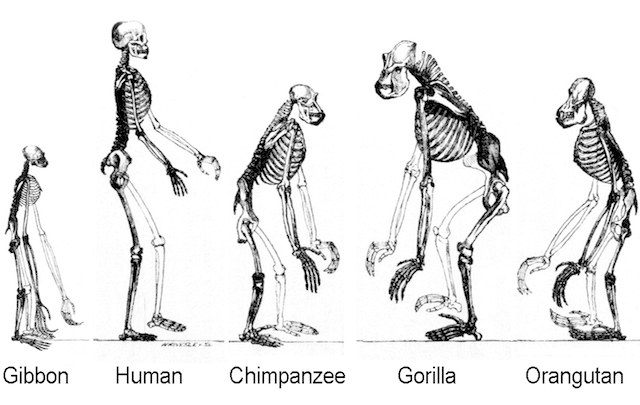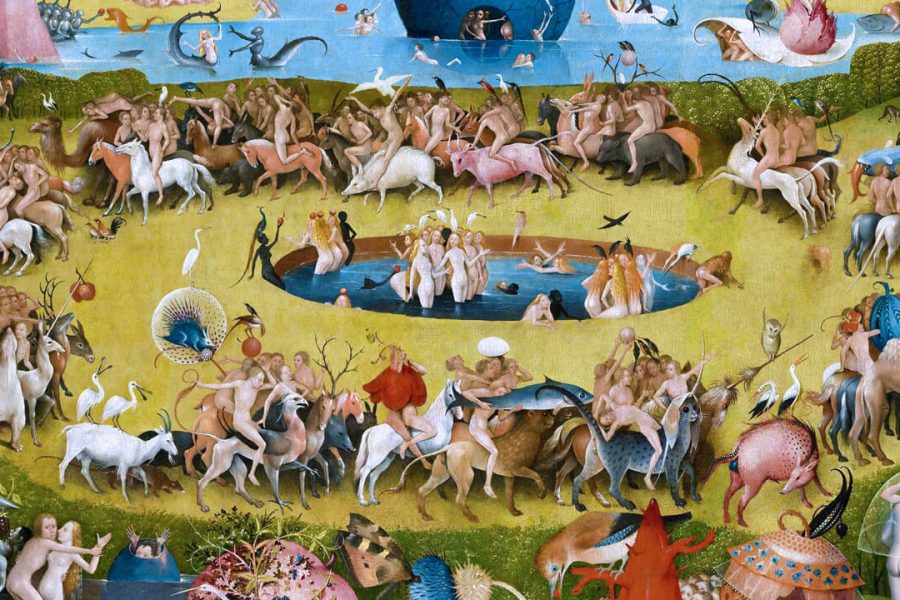Have you ever had a moment where you wondered if a certain tool or invention existed, and when you researched it, you were disappointed to find that someone else had thought of it first? Or worse, you have an idea that doesn’t exist, and it takes someone forever to bring it to life? This kind of thing has been happening for centuries, and not just in the world of inventions. Even scientific ideas can be thought of by someone at some point, but it takes someone else to actually prove it and bring it to life. And sometimes the distance between the person thinking of the idea and the person proving it is correct or feasible can be years.
10. Black holes were proposed as early as 1783.

Everyone knows what a black hole is these days, at least a basic idea of them. However, the concept is still pretty mind-boggling, and many of the basics can be confusing to the layman, even with some scientific knowledge. How can something be so powerful that light can’t escape it? Where do things go when they get sucked into a black hole? Can it ever get full?
Today, science can answer some of these questions and many more, while the nature of black holes remains a mystery. This is all the more fascinating when you consider that the idea of a black hole was first proposed back in 1783. John Mitchell , a priest and scholar from England.
Mitchell came up with the idea of a star with such aenormous gravity, that even light couldn't escape from it. His science wasn't entirely sound, but the concept was worth the money. Only in In 1971 , nearly 200 years later, the first real black hole was identified, confirming Mitchell's idea.
9. Muslim doctors were 500 years ahead of Louis Pasteur in germ theory

If there's one thing people are very aware of these days, it's germs. Whether you wear a mask when you go out in public or not, we all know that viruses and bacteria are everywhere, and avoiding them can keep us healthy.
Most people credit Louis Pasteur with the germ theory as a result of his experiments in the 1860s, which showed that bacteria cause food to spoil. And while being the father of germs isn't always a good thing, it seems to have worked to his advantage.
Now, if we go back a significant amount of time to 1369 and around there, a man named Lisan ad-din Ibn al-Khatib, who is often referred to simply as Ibn al-Khatib , and another one named Ab? Jafar Amad ibn Ali ibn Muhammad ibn Khatima Al-Anar, known as Ibn Hatim , put forward the idea that diseases, and especially plague, are caused microorganisms .
Hatima said that "tiny bodies" entered the human body and caused diseases, but it took hundreds of years before his theory was confirmed and science could show that these tiny bodies, invisible to the naked eye, were real things.
8. Naked mole rats were predicted before they were officially discovered

Theories that refer to equations or scientific processes are one thing when it comes to science, but how often do you hear about the prediction of the existence of an entire life form before that life form is officially discovered? That's what happened with the naked mole rat.
In the 1970s, an entomologist Richard Alexander predicted the existence of mole rats, based on what he already knew about the eusocial structure of insect colonies, such as termites or bees, which have a single queen and many subordinate colony members. He predicted that if such a mammal existed, it would have to be underground and exist in an easily expandable nest near food. This meant it was likely a rodent, since few other mammals live underground. It would likely eat roots and tubers, since there would not be enough larvae and insects for the colony to support it.
He predicted that the animal would have to live in Africa because the climate and soil would be most beneficial to such a creature, keeping predators out while offering the most likely food to sustain such a species.
In 1978 , when Alexander read lecture , someone familiar with the diggers was present, and although he was not familiar with their social structures, he assumed that this was what Alexander was describing. And, as it turned out, his conception of their eusocial society was correct. He had predicted them almost exactly.
7. Arthur C. Clarke predicted communication satellites years before they were invented.

Satellites are ubiquitous these days, and as of 2022 in orbit around our planet located 4852 of them , which do everything from transmitting cell phone signals and GPS to spying and tracking the weather. It's far away from Sputnik , the first satellite launched into space in 1957. In 1962 Telstar was launched , the first communications satellite. Its purpose was to test whether satellites could even be used to create a worldwide communications network. But just two years later, in 1964, science fiction writer Arthur C. Clarke predicted that not only would it work, but that we would be able to contact instantly with other people anywhere in the world, even if we don't know where they are. . This is, of course, a pretty accurate description of how the Internet and cell phones have connected the world.
Sure, it's a little impressive considering he said it when the satellites were in their infancy, but it wasn't his first bite at the apple. Back in 1945 It has already been proposed to use artificial satellites to transmit information to Earth faster and cheaper than using traditional wired communications.
6. Neptune was discovered mathematically before it was seen through a telescope.

As a child, you may have been tempted to question the usefulness of certain lessons, especially those taught in math class. “When are we ever going to use this in real life?” is a common refrain among those who don’t like math class. But never forget that an entire planet in our solar system was discovered not by telescopes or satellites, but by pure mathematics.
The planet Uranus was discovered in 1781, but it was noticed that it had an unusual orbit. John Couch Adams and Urbain Jean Joseph Le Verrier were able to use mathematics to conclude that there must be another planet out there, orbit changing Uranus, and predicted not only its existence, but also where it should be and what mass it had. Using his calculations, Johann Gottfried Galle first saw Neptune in 1846 .
5. Darwin predicted that spiders would "inflate" the Earth's electric field.

The internet loves bizarre animal stories and will essentially recycle the same ones every few years. For example, the story of how certain species of spiders can fly on electric fields . They call it hot air balloon , and you can read about it every several years .
The science was proven by scientists in Bristol in 2018, but it was actually Charles Darwin who first came up with the idea based on observations he made back in in 1832 At the time, he was 60 miles offshore on a ship and noticed that thousands of tiny spiders had somehow invaded. His theory was that they had somehow flown there using their webs.
The reality is that the spiders climb to a high point and point their rear ends upward. They release strands of silk into the air, and the thin strands move along the electrical field of the earth itself. The long-standing theory that they relied on the wind has been disproved, since this happens even when there is no wind at all, and the wind cannot explain the speed and manner of its creation anyway.
4. Computer viruses appeared in the 1940s

There are few things more annoying than getting a virus on your computer after visiting completely innocent websites that you never deleted from your history. The first virus to infect a computer was called Creeper, and it was a test to see if the malware could actually replicate and spread. And it could! But Creeper also politely deleted itself from computers as it spread. That was 1971. Three years later, the Rabbit virus spread and was created with malicious intent. It may have been the first real virus.
But the origin of viruses in a theoretical sense goes back much earlier, to 1949 . That's when John von Neumann suggested that it might be possible. His work was like a thought experiment, introducing the idea.
3. Atomic theory goes back to Greek philosophy

In 1955, Erwin Müller invented microscope , which allowed people to see real atoms for the first time in history. Given the state of atomic theory at the time, this was remarkable. The atom had been split before, but no one had ever seen it before. And what was even more remarkable was how far back in time you had to go to get to the original.
Ancient Greek philosophers developed the idea of atoms based on a pretty simple observation. You can cut anything in half. Then cut that thing in half. And so on and so forth. So all things were made of smaller things, and the idea was that eventually you'd hit the smallest thing. The atom. Uncut .
Democritus put forward the idea of atoms in the 5th century, and remarkably, many of his theories turned out to be pretty sound. Atoms were unique to the material they made up, they moved around in empty space and sometimes stuck to each other, and changes in the way they were arranged led to changes in matter. He may not have known all the basics, but given the time period, his ideas were incredibly insightful.
2. The Greek philosopher Anaxagoras correctly understood how eclipses work.

Few things in nature are as impressive as an eclipse, but it wasn't until the advent of modern astronomy that we were able to fully see and understand what happens during an eclipse. There was a time in the distant past when ancient civilizations believed that everything from dragons to the formidable deities, responsible for eclipses.
Long before anyone understood science, the Greek philosopher Anaxagoras proposed a radical idea. What if the moon passed in front of the sun? This was 2,500 years ago, at a time when both the moon and the sun were deities, mind you, and not a ball of flaming gas and rock orbiting our world. The idea was essentially heretical.
Anaxagoras was committed to the idea that the moon was a rock. He even described mountains on it. But when the prevailing view was that the moon was actually a god, his more scientific approach led to his arrest and eventual exile from Greece. In fact, this was a lenient outcome, since his theories had earned him the death sentence in the first place.
1. Islamic thinkers theorized evolution centuries before Darwin

Charles Darwin will forever be synonymous with evolution and natural selection, but it is important to remember that the man did not come up with these ideas out of nowhere. He made some important observations, but his work followed many others spanning several centuries.
It was 1837 when Darwin's famous work was widely disseminated. Just 1,000 years earlier, Al-Jahiz had theorized natural selection, adaptation, and environmental factors as sources differences between species . He noticed that the animals were struggling to survive, and the strongest or fittest would succeed. And Al-Jahiz was just one of many scientists , who had similar ideas hundreds of years before Darwin came on the scene.
It is generally assumed that Darwin did not plagiarize from these thinkers and, in fact, would never have heard of them. But it shows that ideas can be discovered independently of one another and that sometimes being recognized for a discovery is as much a matter of luck as of skill.














Оставить Комментарий